While some business experts believe supply chain responsiveness and efficiency are opposites, these two aspects serve the same end goal and are equally important:
- An efficient supply chain produces more with less waste, saves money, and delivers products at a low cost. It routinely requires speed and large, uniform orders and includes metrics like the perfect order index, service rate or on-time deliveries, inventory turnover ratio, and order accuracy.
- A responsive supply chain adjusts quickly to changing consumer needs and requires a slower pace and sometimes customized orders.
Can you optimize for both supply chain efficiency and responsiveness? Yes. You surely can. Keep these maxims in mind as your supply chain team sets out to build or rebuild an effective supply chain:
Consistent leadership, comprised of well-established managers and supervisors, ensures a strong foundation. While leadership turnover is inevitable, frequent change can create chaos and confusion since managerial styles differ, and new managers and leaders need time to acclimate. It’s also essential to have a team that looks ahead to future requirements to ensure gradual change is set in place that won’t interrupt the flow of your supplies–rather than having to make drastic alterations to stay competitive for your business or adjust to new conditions, like changes in your suppliers, new shipping routes, or shifting requirements for your business.
Supply chain visibility helps you understand your inventory levels and your efficiency of deliveries. It can help suppliers better understand your inventory levels and adjust their response, too.
Meanwhile, technological adaptation is an essential quality for your supply chain management team. Early adopters can maximize the benefits and provide clients with the benefits new tech ensures. Keeping technology up to date helps to make your business competitive while others lag.
Technological advances are giving companies information on every step throughout the supply chain. Technology is also helping companies respond in real time to problems. For example, a tracking device on each item tells companies when a shipment enters a facility. Technology can then provide data that planners can analyze to predict when a load might be late and then make adjustments.
And a comprehensive, automated approach can allow you to redefine your supply chain strategies and respond quickly to deviations from the plan. Using AI frees executives to devote more time to value-added activities, like identifying the best business growth opportunities.
You will also need key performance indicators (KPIs)–metrics that show you the supply chain’s state in the next three to six weeks. These are central to intelligent execution.
Lastly, remember that solid relationships with dependable suppliers should consistently deliver the products and materials you need, so cost should not be the only factor in choosing your partners.
Generally, mutually beneficial strategic partnerships, especially with suppliers, require contracts that work for both sides. True partners work to understand your requirements and deliver what you need when you need it.
Nexterus helps businesses obtain a balanced supply chain with the best mix of efficiency and responsiveness possible. With our knowledge, experience, and combination of services, we ensure you can meet your customers’ needs in the most efficient manner. We can help you hit that sweet spot where your supply chain is running quickly, smoothly and providing the kind of quality that can ensure long-term success and growth for your business. For more information, visit Nexterus at www.nexterus.com.



